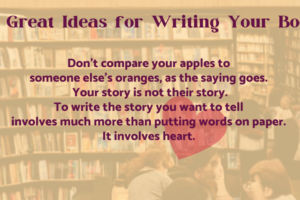HIBs? 14 Proven Ways to Increase Your Happiness
This post grew out of my recent contribution to our weekly newsletter, where I share my emerging ideas from the reading I’m doing in books or curated from my own inbox. In this case, the seed was an email from Seph Pennock at PositivePsychology.com. First, the subject line of the email caught my eye, Success versus Happiness – What is More Important?, because it poses a similar question to my recent post, Succeeding, in 3 Million Moments (and counting!).
But then I found the subheading “9 Science-Backed Ways to Become Happier.” And from the references, I jumped to a 2011 research paper entitled, Happiness Inducing Behaviors in Everyday Life: An Empirical Assessment of “The How of Happiness” — which adopted the acronym “HIBs” in the first line of the abstract and upped the ante to confirm 14 of them!
All 14 HIBs can have positive effects
The paper assumes we are quite familiar with the literature on happiness that existed in 2011, so I’m going to offer some explanations and sprinkle a reading list through them that includes some additional support and updated evidence. As the title of the paper indicates, a major source of the HIBs listed came from the work of Sonia Lyubomirsky collected in her book, The How of Happiness: A New Approach to Getting the Life You Want.
Before diving into the HIBs, a crucial point to remember is that all of them showed a positive correlation to happiness.
I’m listing them in the order that this particular study found the largest to the smallest correlations. But as the authors warned, the study was done with college students, limiting its value for generalization. We’ll try to fill in those gaps in a few places.
1. Cultivating optimism
2. Savoring life’s joys
3. Avoiding worry, comparison, and rumination
4. Nurturing social relationships
5. Doing acts of kindness
6. Expressing gratitude
7. Healthy eating
8. Physical exercise
9. Committing to goals
10. Developing new ways to cope
11. Practicing religion or spiritual activities
12. Increasing flow experiences
13. Learning to forgive
14. Meditation
1. Cultivating optimism
If you see yourself as an optimist, this is wonderful news, right? But the important assumption behind this most effective happiness generator should encourage the natural pessimist, too: optimism can be cultivated.
Even optimists can get better at both employing and tempering their optimism. As Martin Seligman wrote in his book Learned Optimism: How to Change Your Mind and Your Life:
“What we want is not blind optimism but flexible optimism — optimism with its eyes open. We must be able to use pessimism’s keen sense of reality when we need it, but without having to dwell in its dark shadows.”
There’s a ton of research backing the value of learning how to be more optimistic and any of these additional books will get you started, if you want to improve yours:
- The Myths of Happiness: What Should Make You Happy, but Doesn’t, What Shouldn’t Make You Happy, but Does, Sonia Lyubomirsky’s follow-up book
- The Happiness Hypothesis: Finding Modern Truth in Ancient Wisdom, by Jonathan Haidt
- Flourish: A Visionary New Understanding of Happiness and Well-being, by Martin Seligman
- Before Happiness: The Five Hidden Keys to Achieving Success, Spreading Happiness, and Sustaining Positive Change, by Shawn Achor
One side note on optimism and aging: there seems to be a synergy between the well-documented “age-related positivity effect” (we develop an increasing bias toward positive information processing, i.e., an optimistic outlook) and emerging research indicating that older adults show greater emotional resilience than younger ones. A hint at why may be found in this observation from a paper that was looking at resilience in children:
“Resilience emerges not from rare or extraordinary qualities and circumstances, but from ‘the everyday magic of ordinary, normative human resources in the minds, brains, and bodies of children, in their families and relationships, and in their communities’.”
Older adults simply have had more opportunity to experience this “everyday magic.”
2. Savoring life’s joys
This one seems almost too obvious. But Lyubomirsky’s research shows there’s a right way to revisit our happy moments: replay them, don’t analyze them.
“The most adaptive strategy is to relish and luxuriate in the memory of the positive event — to replay it in our minds the way we might rerun a video clip. This exercise helps us savor the event and extract the maximum possible enjoyment and pleasure from it.”
She describes savoring as depositing these positive experiences into a sort of bank account where we can draw on them throughout our lives. But she points out two dangers lurking around revisiting our best moments. One is the risk of looking too closely, asking ourselves questions about why things happened that way and the what ifs, which can drain the joys out of the experience.
The other danger comes from “good old days” syndrome, where we sometimes think the past experience was so good, it must be all down hill from there. To avoid that risk, she advises building connections from our past joys, victories, and learnings to our present and future by setting and pursuing positive, meaningful goals.
You might think of this as a way to “reinvest” those postive experience bank deposits. We’ll see some overlap to this concept in 9 and 10, below.
3. Avoiding worry, social comparison,
and self-focused rumination
The flip side of savoring past joys, the same research tells us not to replay or relive our inevitable mistakes, defeats, or tragedies. Instead,
“We will be happiest if we systematically analyze our most painful moments — to try to understand them, come to terms with them, extract meaning from them, and thus get past them.”
Another danger to be avoided: rumination. Two warning signs that your reflections on past negative experiences have slipped into unhealthy ruminations are (1) you’re looping through the same events without change or progress toward insight and understanding, and (2) you’re not in control over when and how you revisit them and find such memories popping up unbidden.
Research has validated techniques like journaling, talking to a level-headed friend, and meditation as ways to overcome rumination and keep your work on resolving those painful memories intentional and positive.
4. Nurturing social relationships
Seligman sums up the research showing the impact of positive social relationships on our well-being succinctly:
“Other people are the best antidote to the downs of life and the single most reliable up.”
He traces the evolutionary biology theories about why our brain size doubled a few hundred thousand years ago as enabling more complex social cooperation and interdependence, concluding:
“So basic are positive relationships to the success of Homo sapiens that evolution has bolstered them with the additional support of other [positive emotions] in order to make damn sure that we pursue positive relationships.”
And the well-being benefits of positive relationships go beyond making us feel happy. They keep us physically healthier and seem to help us live longer, too. As Barbara Fredrickson put it in Love 2.0: Creating Happiness and Health in Moments of Connection:
“Mountains of research have documented that people who have diverse and rewarding relationships with others are healthier and live longer. These studies … tell us that people who experience more warm and caring connections with others have fewer colds, lower blood pressure, and less often succumb to heart disease and stroke, diabetes, Alzheimer’s disease, and some cancers. Many of the key conditions that threaten to set you back or shorten your life can thus be staved off by upgrading how and how frequently you connect with others.”
5. Doing acts of kindness
In The Book of Joy: Lasting Happiness in a Changing World, Archbishop Desmond Tutu asserts, “Our greatest joy is when we seek to do good for others.”
Lyubomirsky offers a deeper insight on a compounding effect from kindness:
“When we give to others, we feel not only more positive about ourselves (that is, as a compassionate, altruistic person), but about the recipients as well (that they are worthy of our kindness and respect).”
Recalling the bank account metaphor, this might be viewed as earning interest on your deposits.
6. Expressing gratitude
Seligman explains yet another way these behaviors can reinforce each other:
“Gratitude can make your life happier and more satisfying. When we feel gratitude, we benefit from the pleasant memory of a positive event in our life. Also, when we express our gratitude to others, we strengthen our relationship with them.”
Two exercises that can help make expressing gratitude a regular practice in your life are “gratitude visits” and a “three good things” journal. For the gratitude visit, think of something helpful that a person has done for you, but you haven’t properly thanked them. Write a short letter of gratitude, with specifics about what they did, how it benefits you, and how you feel when you recall it. Then deliver it in person and read it to them.
In the three good things exercise, take a few minutes each night for a week and write down three things that went well that day. Next to each positive occurrence, explain what caused it to go well, focusing on the who, what, and why.
Both of these HIB exercises have been shown to increase happiness and well-being for months after doing them.
And once again, there’s a compounding effect when you express your gratitude to another person. Fredrickson calls this a “positivity resonance” between the person who did us a kindness and the way we express our gratitude. From Love 2.0:
“I’ve explored how kindness and appreciation flow back and forth in couples … We learned from this work that some people tend to say ‘thanks’ better than others. … Whereas many people express their appreciation to others by shining a spotlight on the benefit they received … the best ‘thank-yous’ simply use the benefit as a springboard toward shining a spotlight on the good qualities of the other person.”
That kind of thank-you not only makes you feel better, it becomes a return kindness, making the other person “feel understood, cared for, and validated.” The research found these positive mutual feelings continued making the relationship stronger six months later.
7 & 8. Healthy eating; physical exercise
Not only were these two behaviors essentially tied in the HIBs study, but I can recommend more recent books that delve into the neuroscience and evolutionary biology behind how both a healthy diet and physical exercise can improve your well-being:
- Healthy Brain, Happy Life: A Personal Program to Activate Your Brain and Do Everything Better, by Wendy Suzuki. Her personal story and parallel research will inspire you.
- Footnotes: How Running Makes Us Human, by Vybarr Cregan-Reid. Also connects to the health and happiness benefits of being in nature.
- Kintsugi Wellness: The Japanese Art of Nourishing Mind, Body, and Spirit, by Candice Kumai. Full of advice — and recipes — for healthy eating, but also covers exercise practices like “forest bathing” (shinrin yoku, walking slowly through the woods, taking time to contemplate, breath fresh air and the oils from the trees, open all your senses to the surroundings).
- The Story of the Human Body: Evolution, Health, and Disease, by Daniel Lieberman.
9. Committing to goals
You may have heard of a Harvard ’79 (or Yale ’53) study that showed how rich the graduates who had written goals became compared to their directionless classmates. For decades motivational speakers, authors, and bloggers have touted claims that only 3% of the class had written goals and tweny years later those few were earning 10 times as much as those without, based on one or the other study (see this Fast Company article on the Yale study for a list of the more famous gurus recounting the story).
Except it turns out nobody can find evidence that such a study took place at either school.
But before you throw away your goal-setting pen and paper set, there’s actually a lot of science supporting the idea behind the myth. And a few years ago, Professor Gail Matthews decided to put it to the test. With a broad sample of ages (23-72), nationalities, and occupations, she designed her study to test not just whether writing down your goals makes a difference, but also several additional factors like “difficulty, importance, the extent to which they had the skills and resources to accomplish the goal, their commitment and motivation, and whether they had pursued the goal before (and, if so, their prior success).”
With a control Group 1 assigned merely to think about their goals and the factors listed above, she assigned four more groups to add:
- Group 2 – write down their goals and the factors above
- Group 3 – write the goals and factors and also add action commitments for each goal
- Group 4 – write goals, factors, action commitments and share the plans with a friend
- Group 5 – all of the above, plus send a weekly progress report to their friend
The study summary reports significantly greater success in achieving among all of the groups versus the “think about it” group — though nothing like the mythical 10 times greater. Matthews concluded that the writing, public commitment, and accountability actions were confirmed to contribute to achieving goals, with those doing all three (Group 5) achieving 77% more than those who did none of them.
So, does achieving the goals you set lead to happiness? We could just say it’s complicated.
But when you dig deeper into the research, along with an overall answer that, yes, setting goals can increase your long-term happiness, here are a few of the wrinkles:
- on the one hand, research shows that setting ambitious goals provides more happiness than “low bar” goals
- on the other, setting goals you believe to be attainable matters most to the happiness you’ll derive
- this conundrum can be resolved by breaking up your ambitious goal into smaller, attainable steps, because making progress toward your goals is what really counts
- “intrinsic” goals that are personal and meaningful to you make you happier than external goals like wealth, fame, or popularity, “because they are likely to satisfy innate psychological needs for autonomy, relatedness, competence, and growth”
- and consistent with the above, progress toward your goals delivers happiness, regardless of whether the ambitious, ultimate goal is achieved!
Oh, and do write them down, tell someone you trust, and report on your progress!
10. Developing new ways to cope
While this one might seem a little circular, there’s plenty of research to back up Barbara Fredrickson’s “broaden-and-build” theory for how experiencing a positive emotion “broadens our thought-action repertoire” — opens up our toolbox for taking further positive actions. For example, if we laugh at a joke, we’re more ready to engage in further playful behavior. We’ve broadened our immediate selection of next actions.
When we act on those broadened options and experience more fun, or other positive emotions, it can also “augment peoples’ enduring coping resources.” We’re building up our “toolbox” of coping behaviors for future use.
11. Practicing religious or spiritual activities
Here I will refer you again to The Book of Joy, by The Dalai Lama and Archbishop Desmond Tutu, and specifically to their appendix that describes for you no less than 27 “Joy Practices” you can adopt or adapt to add joy to your life!
The practices are organized under six headings:
- Developing Mental Immunity
- Morning Intention Setting
- Overcoming the Obstacles to Joy
- Cultivating the Eight Pillars of Joy
- Rejoicing in Your Day
- Relationship and Community–The Greatest Joy
As explained under that last heading, engaging in joy practices can be done within an existing religion, or with any group you may form, or with a single friend or relative.
“If you invite others to do these joy practices, you will experience far greater joy than just doing them by yourself. Relationship is the true proving ground for spirituality. Ultimately, joy is not something to learn, it is something to live. And our greatest joy is lived in deep, loving, and generous relationship with others.”
12. Increasing flow experiences
You’ve probably heard of and even experienced the state of flow, where you become so absorbed in a task or activity that you lose conscious awareness of the passage of time and your surroundings.
A recent review article noted “a 10-year longitudinal study showed people in flow states were 500% more productive.” Among other pleasurable aspects, people experiencing flow report feeling in complete control of their actions and an effortless ability to perform, due to the intrinsic rewards of the activity.
Notably, that last part matches nicely with the definition of play in Stuart Brown’s book, Play: How It Shapes the Brain, Opens the Imagination, and Invigorates the Soul. He describes play as inherently attractive activities we do voluntarily, simply for their own sake, with freedom from time and diminished consciousness of self. Indeed, he acknowledges the connection openly: “We are experiencing what the psychologist Mihaly Csikszentmihalyi calls ‘flow’.”
We can carry this overlap of the work-related concept of flow and its play counterpart further by looking at how serious efforts to define play seem inevitably to bring in concepts that fit well with work that we find meaningful, even enjoyable. For example, historian of play Scott Eberle derived six elements of play, each with eight degrees of intensity. As you can see in this graphic from the Strong National Museum of Play, many of the descriptors — especially under the Understanding and Strength elements — apply equally to our work.

No need to tell your boss you’re having so much fun, right? But how do we get into the flow more often?
The play elements graphic provides hints and the research confirms several. Among them, getting into the flow state seems to require finding activities that you enjoy or at least find meaningful and worthwhile; matching the challenge of the task with your ability to perform or learn to perform it; and perhaps engaging in group or team activities some of the time.
13. Learning to forgive
Lyubomirsky echoes my own feelings on forgiveness when she admits to being “in awe” of people who forgive the most horrific actions against them. When she cited parents forgiving the murderers of their children, I was reminded of the black man in Texas asking the judge to let him hug the white woman police officer who had killed his brother.
In her book, The Myths of Happiness, Lyubomirsky offers Nelson Mandela forgiving his years of abuse in prison as her ultimate example, following with the science:
“Mandela later explained that if he did not forgive, he would spend the rest of his days living with bitterness and hatred. His view is not only deeply inspiring but is persuasively supported by empirical evidence. Whether the act is extraordinary, as in the dramatic examples above, or involves letting go of everyday transgressions in our lives, forgiving others can liberate us in more ways than one.”
She notes studies showing wide-ranging benefits, including minimizing angry or depressive thoughts, increasing optimistic thinking, fostering life-contentment, improving physical health, and increasing productivity at work.
One of the studies provides validated methods for learning to forgive, with a 20 step process for working through the four phases of forgiving another: uncovering, decision, work, and outcome. And another shows a spill-over effect, where forgiving one person can lead to
“higher levels of a ‘we’ frame of mind … greater feelings of relatedness toward others in general … greater probability of donating to charity and greater willingness to engage in volunteering.”
Lyubomirsky does include a “doormat caveat.” But once again, she offers science-backed criteria to help decide “when forgiveness is beneficial versus harmful” in the context of marriage, depending on (1) likelihood of staying married, (2) likelihood of the offense being repeated in the future, and (3) frequency of previous offenses.
A broader insight on forgiveness comes through the South African experience, from which Desmond Tutu and his daughter Mpho Tutu developed their fourfold path of forgiveness, detailed in their book, The Book of Forgiving. Their process disconnects the work we must do within ourselves in the first three steps:
- tell our story in our mind, in writing, or in person;
- name the hurt;
- grant forgiveness while acknowledging mutual humanity
They treat as a separate fourth step our deciding whether to renew or release the relationship.
14. Meditation
Because I have restored meditation to my own morning routine, I was baffled that it came in last in the particular study that produced this list. But remember: all of these HIBs can contribute to your happiness.
I suspect that the term “meditation” itself was not adequately defined, because as the Dalai Lama explains:
“The word ‘meditation’ is quite vast. One form … involves thoughtlessness. There is also meditation that involves maintaining focused attention. … Now, in my own practice I engage mostly in analytical meditation …”
In fact, The Book of Joy’s “Joy Practices” appendix describes a half dozen forms of meditation — and you are encouraged to learn more than one. They include a morning walking, running, or exercise routine. But be warned: you’ll need to lose the earbuds, since
“the key is to avoid all external distractions like talking, music, or television … [in order] to listen to the wisdom of the spirit that often comes through the wisdom of the body.”
Yet another meditation practice I have grown to love is LKM, or Loving-Kindness Meditation, which I first learned about in Love 2.0. Short version, in place of the typical mantra you focus your attention on well-being, your own along with an expanding circle of others — as Buzz Lightyear would put it, “To infinity and beyond.”
Quoting Fredrickson from Love 2.0:
“The traditional phrases go something like this:
May this one (or I, we, he, she, or they) feel safe.
May _______ feel happy. (you may add a word or phrase, like ‘and peaceful’)
May _______ feel healthy. (‘and strong’)
May _______ live with ease.”
So how about your HIBs?
Which of these “happiness inducing behaviors” are you already taking advantage of? Do you agree that they increase the happiness in your life?
And which ones can you add to your routine?






1 Comment
Leave your reply.